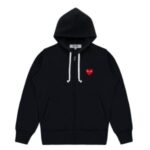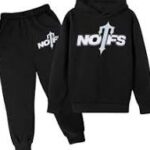The global Phenolic Boards Market Size is projected to grow at a CAGR of 2.9% from 2025 to 2034. Phenolic boards, known for their versatility and exceptional performance, are used across various sectors, including construction, automotive, and industrial applications. These boards are made from a combination of phenolic resin, wood fibers, and other materials, offering superior strength, fire resistance, and thermal insulation properties.
The demand for phenolic boards is expected to rise due to their sustainability, cost-effectiveness, and increasing use in eco-friendly building practices. As the construction industry continues to grow, so does the demand for these high-performance materials. In addition, rising concerns over energy efficiency, fire safety, and environmental impact are propelling the adoption of phenolic boards globally.
Key Industry Developments
- Technological Advancements: Manufacturers are investing in the development of phenolic boards with enhanced properties such as improved fire resistance, insulation, and durability. With a growing emphasis on sustainable building materials, the industry is also witnessing the rise of bio-based phenolic boards, which contribute to reducing the carbon footprint.
- Product Innovations: Several companies are focusing on innovating the design and performance of phenolic boards to meet the evolving needs of the construction industry. New product variants with enhanced soundproofing, moisture resistance, and ease of installation are gaining popularity.
- Strategic Partnerships: Key players in the market are forming strategic alliances and joint ventures to enhance their production capacities, expand their geographical presence, and improve their market share. Collaborations with architects, designers, and builders are becoming increasingly common to integrate phenolic boards into modern architecture.
- R&D Investments: Leading companies are channeling investments into research and development (R&D) to explore new applications for phenolic boards. These efforts are aimed at enhancing the material’s physical properties, increasing its durability, and ensuring better performance in extreme conditions.
Driving Factors of the Phenolic Boards Market
- Growth in the Construction Industry: The construction sector is one of the primary drivers of the phenolic boards market. As cities expand and the demand for residential, commercial, and industrial infrastructure increases, the need for high-quality materials, such as phenolic boards, is rising. These boards provide a cost-effective and sustainable solution for a wide range of applications, including wall panels, flooring, and insulation materials.
- Increase in Demand for Sustainable Materials: With heightened awareness about environmental conservation, there is a growing demand for eco-friendly building materials. Phenolic boards made from renewable sources or recycled materials align with the green building standards and contribute to reducing carbon emissions. This shift towards sustainable construction practices is further boosting the adoption of phenolic boards.
- Fire Safety Regulations: Increasing regulations on fire safety in buildings and public infrastructure have made phenolic boards a preferred choice. These boards offer exceptional fire resistance and contribute to enhancing the fire safety standards of buildings, especially in high-rise constructions. As more countries tighten fire safety regulations, demand for phenolic boards is expected to rise.
- Energy Efficiency and Insulation Properties: Phenolic boards are excellent insulators, both thermally and acoustically. The growing need for energy-efficient buildings, particularly in regions facing extreme climates, has led to higher adoption of these boards. Their ability to maintain interior temperatures while reducing noise makes them ideal for modern residential and commercial construction projects.
COVID-19 Impact on the Phenolic Boards Market
The COVID-19 pandemic had a significant impact on global industries, including construction and manufacturing. In the early stages of the pandemic, construction activities were temporarily halted, leading to delays in building projects. This affected the demand for construction materials, including phenolic boards. However, as economies began to recover and construction projects resumed, the market for phenolic boards saw a rebound.
Restraining Factors
- High Production Costs: Despite their benefits, phenolic boards are relatively expensive to produce compared to other conventional building materials like plywood and MDF. The high production costs, along with the need for specialized raw materials and manufacturing processes, limit the widespread adoption of phenolic boards, especially in cost-sensitive markets.
- Limited Awareness: While phenolic boards offer numerous advantages, they are still relatively unknown to many end-users, particularly in emerging economies. Limited awareness of their benefits in terms of fire safety, insulation, and sustainability can hinder market growth.
- Availability of Alternatives: Alternative materials, such as fiberboards, plywood, and gypsum boards, are often used as substitutes for phenolic boards. These alternatives may be more cost-effective and easier to source, limiting the demand for phenolic boards, especially in regions with budget constraints.
Market Segmentation
The phenolic boards market can be segmented based on the following factors:
-
By Application:
- Construction: Includes residential, commercial, and industrial buildings.
- Automotive: Used in automotive interiors for insulation and fire resistance.
- Aerospace: Utilized in aircraft interiors and for insulation purposes.
- Furniture: Used in the production of high-quality furniture, especially for fire resistance.
- Others: Includes applications in marine, electronics, and other industries.
-
By Resin Type:
- Bakelite: A traditional phenolic resin that offers high heat resistance and electrical insulation.
- Novolac: Known for its strength and resistance to chemicals, used in various industrial applications.
- Other Resin Types: Includes bio-based and specialty resins.
-
By End-Use Industry:
- Building and Construction: The largest segment, driven by the rise in sustainable construction practices.
- Automotive: Increasing use of phenolic boards in automotive manufacturing for their fire-resistant properties.
- Electrical and Electronics: The demand for phenolic boards in electrical components and electronics is growing due to their insulation properties.
Market Outlook and Trends
The phenolic boards market is expected to experience steady growth during the forecast period, driven by the increasing emphasis on sustainability, energy efficiency, and fire safety in construction. The growing construction activities in developing economies, coupled with the rising awareness about the benefits of using phenolic boards, will continue to fuel market demand.
In addition, the trend of integrating advanced technologies and sustainable practices in the construction industry will further drive innovation in phenolic board production. New developments in bio-based resins and environmentally friendly production processes will help manufacturers address sustainability concerns and enhance their competitive edge.
Regional Analysis
- North America: The market in North America is expected to grow due to stringent fire safety regulations and the high demand for sustainable construction materials. The U.S. and Canada are witnessing increasing adoption of phenolic boards in both residential and commercial buildings.
- Europe: Europe is a key market for phenolic boards, with a strong focus on green building practices and energy-efficient construction. The European Union’s emphasis on sustainability and reducing carbon emissions is expected to drive demand for eco-friendly materials like phenolic boards.
- Asia-Pacific: The Asia-Pacific region is experiencing rapid urbanization and infrastructure development, especially in countries like China, India, and Japan. This has led to an increase in the demand for construction materials, including phenolic boards, in the region.
- Latin America and the Middle East: The growth in construction activities and the rising demand for fire-resistant and energy-efficient materials are driving the phenolic boards market in these regions.
Key Players in the Market
- Spigo Group
- Kingspan Group
- Asahi Kasei Corporation
- LX Hausys, Ltd.
- SAVI CO., LTD
- Changzhou Zhongtian Fireproof Decorative Sheets Co., Ltd.
- Yalong Wood Co., Ltd.
- UNILIN Insulation
- Fiberisin Industries
- Others
Opportunities and Challenges
Opportunities:
- The growing demand for eco-friendly construction materials.
- Increasing adoption of phenolic boards in high-end residential and commercial construction projects.
- Technological advancements in resin formulation and manufacturing processes.
Challenges:
- Competition from alternative materials, such as plywood and fiberboards.
- High manufacturing costs of phenolic boards, limiting their appeal in price-sensitive markets.
- Limited awareness of the advantages of phenolic boards in certain regions.




